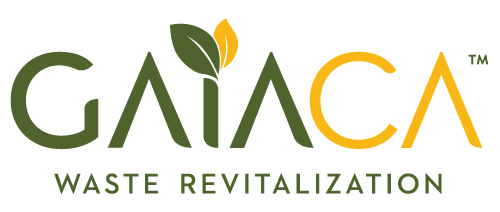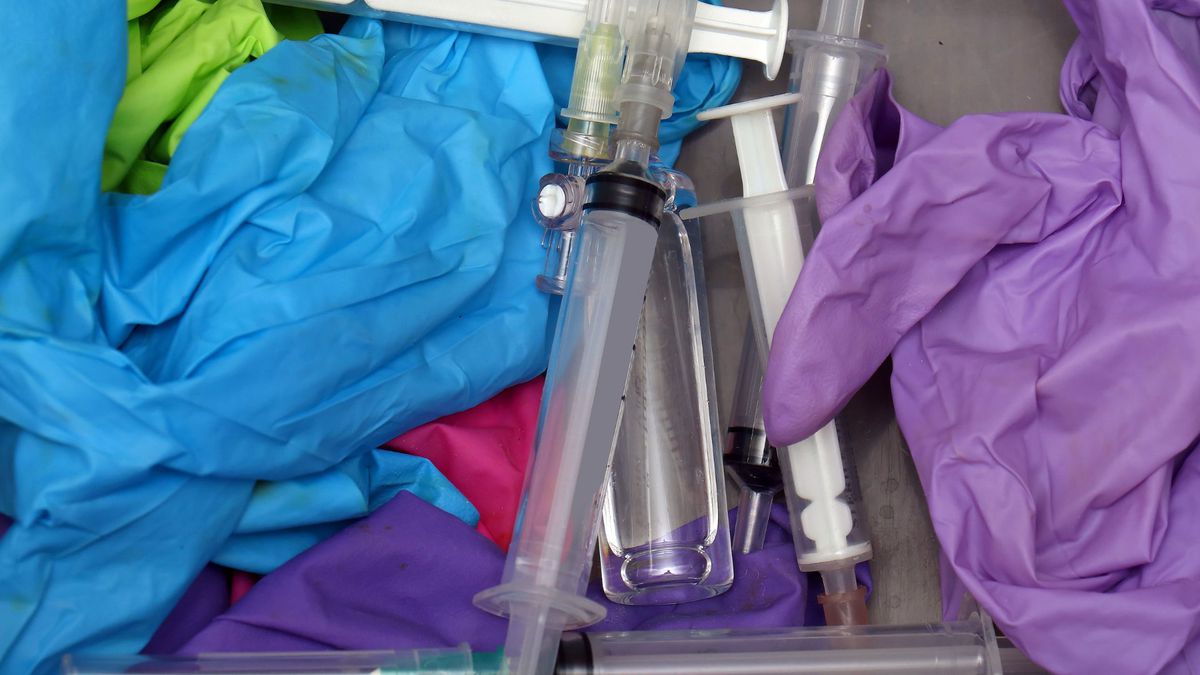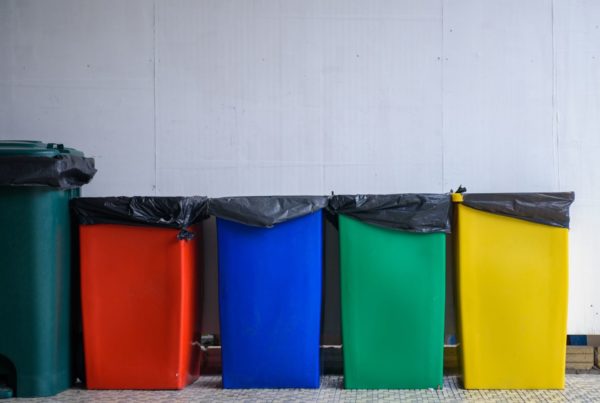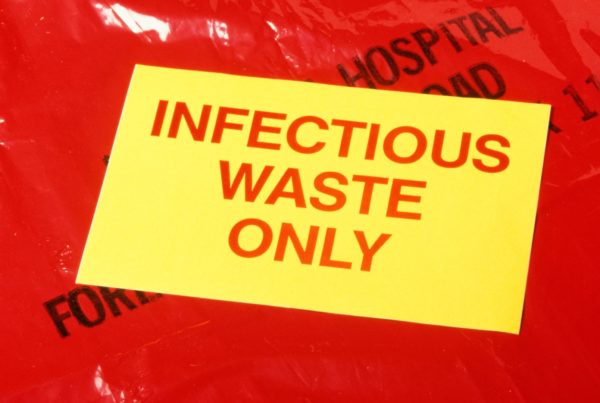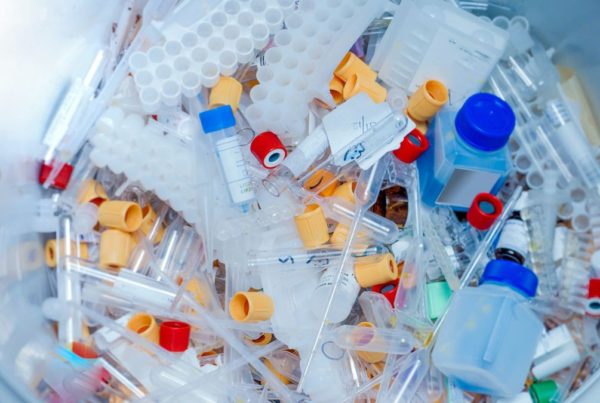Health care facilities work day in and day out to help people recover from injuries and illness, but the medical waste produced through these activities can pose a problem if an appropriate medical waste management system is not available or followed strictly.
Understanding the key medical waste problems is the first step to developing an effective health care waste management plan for nursing homes, autopsy centers, blood banks, medical clinics, veterinarian clinics, hospitals, testing laboratories, and other health care facilities that generate medical waste.
Types of Medical Waste
According to the World Health Organization, only 15% of medical waste is actually hazardous waste. The remaining 85% is as innocuous as regular household waste and can either be disposed of in the trash or recycled. The 15% that comprises hazardous medical waste includes:
- Infectious waste
- Toxic waste, including chemical waste
- Pharmaceutical waste
- Cytotoxic waste
- Radioactive waste
- Sharps waste
All of these waste types carry health risks for health care workers, janitors, people who live near health care facilities and medical waste incinerators, and people who scavenge through waste disposal sites—especially in low and middle-income countries where this practice is still common. Proper lab packing and clean-up and decontamination can reduce and in some cases eliminate the health hazards related to medical waste disposal.
Infectious Waste
Infectious waste is perhaps the most obvious kind of hazardous waste associated with health care activities. Swabs, gauze, cotton balls, bandages, clothes, disposable towels, gloves, masks, and medical devices that are contaminated with blood or bodily fluids could carry infectious diseases that put health care workers at risk.
The same risk applies to pathological waste such as human tissues and body parts that have been removed during surgery or during an autopsy, as well as contaminated animal carcasses in veterinary clinics. These tissues may contain drug-resistant pathogens that could be released into the environment if not properly treated and/or destroyed.
Toxic Waste, Including Chemical Waste
Toxic waste includes chemicals such as solvents and reagents used in laboratory testing as well as sterilants, disinfectants, and film developer used in diagnostic imaging facilities. It also includes heavy metals such as mercury in broken thermometers and blood-pressure gauges.
If destroyed through open burning or thrown into the regular trash, these kinds of waste can release toxic pollutants into the atmosphere, including the air, ground, surface water, and groundwater. For safe disposal, toxic waste must be handled by a hazardous waste management company and never poured down the drain, dumped, buried, or burned in a medical incinerator.
Pharmaceutical Waste
Pharmaceutical waste includes expired, unused, contaminated, and recalled drugs and vaccines. Expired Epi-pens are a prime example of pharmaceutical waste. Improper disposal of pharmaceutical waste can lead to people and animals finding and ingesting expired and contaminated drugs, or live viruses being released into the environment.
Like toxic and infectious waste, pharmaceutical waste needs proper management to prevent illness, drug poisoning, and injuries. Consumers should return unused, recalled, and expired pharmaceutical products to their medical clinic or pharmacy for safe disposal.
Cytotoxic Waste
Cytotoxic waste includes substances like cancer drugs that may have mutagenic, teratogenic, or carcinogenic effects. These substances are used in a highly controlled, highly measured way, and could have disastrous consequences if they fall into the wrong hands.
Like other hazardous waste types, cytotoxic waste should be segregated and placed in sealed containers, given an appropriate hazardous waste label, and stored in a secure location until it can be transported for treatment and disposal. Due to its highly hazardous nature, cytotoxic waste is usually incinerated.
Radioactive Waste
Radioactive waste includes radiological products used in diagnostic testing and radiotherapy. Radiological waste can be solid (compactible or non-compactible), liquid (aqueous or organic), or biological. The improper handling and disposal of radioactive waste can lead to radiation burns and cancer.
Depending on the type of radioactive waste generated and its half-life, it may be treated, sealed until it decays, and then sent to a regular waste facility, or placed in a suitable container and buried deep in the ground between rocks that won’t allow the radioactive material to escape.
Sharps Waste
Sharps waste includes syringes, pipettes, broken glass, disposable scalpels and blades, and other discarded surgical instruments. If thrown in the regular trash, sharps poking out of the bag can injure janitors and garbage truck workers. Furthermore, needle-stick injuries carry a risk of transmitting hepatitis B, hepatitis C, and human immunodeficiency virus (HIV).
Whether needles are used at home or in health care facilities, they should always be placed in a sharps container made from heavy plastic and labeled clearly with the words “SHARPS.” Once a sharps container is 3/4 full, it should be sent to a waste facility for treatment and disposal. Typically, used needles are rendered non-infectious and destroyed. Empty vaccination syringes (all except the needle) are made from polypropylene and can be recycled, although at present only about 1% actually are.
Who Regulates Medical Waste?
In the United States, medical waste disposal comes under the jurisdiction of several bodies, including the Center for Disease Control and Prevention (CDC), the Federal Drug Administration (FDA), and the Occupational Health and Safety Administration (OSHA).
The Environmental Protection Agency’s Office of Air Quality Planning and Standards oversees the Hospital Medical Infectious Waste Incinerator (HMIWI) standards. The EPA’s Office of Prevention, Pesticide, and Toxic Substances (OPPTS), Antimicrobial Division is responsible for registering antimicrobial chemicals used to sterilize infectious medical waste.
In 1988, the Medical Waste Tracking Act put the EPA in charge of regulating medical waste for two years in New York, New Jersey, Connecticut, Rhode Island, and Puerto Rico. After the two-year period was over, each state became responsible for regulating medical waste, guided by the findings of the MWTA.
Medical Waste Problems Worldwide
At a global level, medical waste problems primarily affect countries with inadequate training in proper waste management and a lack of facilities and systems to deal with medical waste.
According to data from the World Health Organization and UNICEF, the use of contaminated needles—particularly in developing countries—was responsible for “33 800 new HIV infections, 1.7 million hepatitis B infections, and 315 000 hepatitis C infections” in 2010. In 2015, just over half of the facilities sampled in 24 countries had adequate medical waste management systems in place.
Strategies to Deal with Medical Waste Problems
The most common method for treatment and disposal of health care waste is burning it in medical incinerators. However, as mentioned earlier, burning chemicals, gloves, and heavy metals release toxic pollutants including dioxins and furans into the air.
Safer Incinerators
If incineration is to be used for health care waste, the WHO recommends the use of modern incinerators that operate at 1,562-2,012°F (850-1,100 °C) and are fitted with special gas-cleaning equipment to prevent emissions into the atmosphere.
Alternative Treatments
Alternatively, health care facilities and/or hazardous waste treatment facilities can use steam sterilization (like autoclaving), electro pyrolysis, and/or chemical-mechanical systems to render the waste non-infectious so that it can be sent to regular waste disposal facilities.
Where to Go From Here
If you are in charge of a health care facility or testing laboratory and need help setting up an appropriate medical waste management plan, the best course of action is to reach out to a licensed hazardous waste management company in your state that is familiar with the relevant state laws and local treatment and disposal options.
Many hazardous waste management companies also offer environmental consulting and wastewater assessment services, providing you with vital information about the impact of your facility on the surrounding environment right now and helping you come into compliance with local and federal regulations.
In most cases, medical waste problems are easy to fix by implementing adequate systems to deal with the waste. Much medical waste can be recycled, recovered, neutralized, safely burned, or sterilized, reducing your waste burden and preventing fines for non-compliance. Ultimately, proper medical waste management leaves you free to focus on your central mission: offering high-quality health care.
